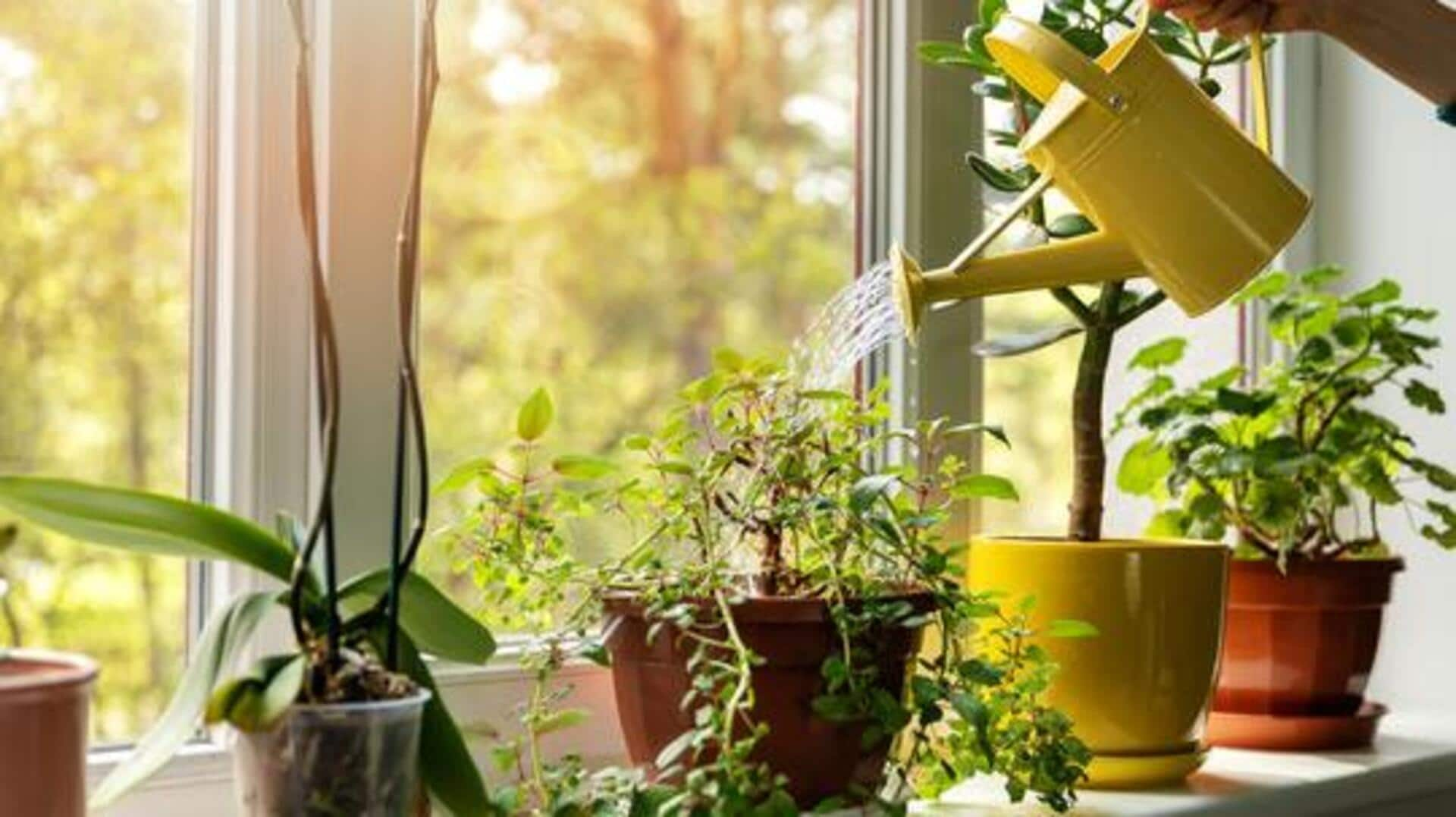
Plant care 101: 5 hacks to prevent overwatering
What's the story
Indoor plants can add life and vibrancy to any space, but overwatering is a common mistake that can spell doom for them. Knowing how to manage how much water your plants get is key to keeping them healthy. Here are five practical hacks to help you avoid the perils of overwatering your indoor greenery. With these, you can help your plants thrive without drowning them in excess moisture.
Soil choice
Use well-draining soil mix
Choosing the right soil mix is key to avoiding overwatering. A well-draining soil lets excess water escape, minimizing the risk of root rot. Opt for potting mixes that have elements such as perlite or sand, which enhance drainage capabilities. These materials form air pockets in the soil, making water flow through more easily and preventing roots from sitting in stagnant moisture.
Consistent timing
Implement a watering schedule
Plus, a consistent watering schedule also prevents accidental overwatering. Rather than watering on impulse, assign specific days of the week for checking soil moisture levels and watering, if needed. This way, you ensure that you only water, when needed, and maintain an optimal balance of moisture in the soil.
Moisture testing
Check soil moisture before watering
Before reaching for the watering can, always check the soil's moisture level first. Insert your finger about an inch into the soil; if it feels dry at this depth, it's time to water. Alternatively, use a moisture meter for more precise readings. This simple step prevents unnecessary watering when the plant doesn't actually need it.
Pot design
Ensure proper pot drainage
The design of your plant pots also plays a major role in avoiding overwatering problems. Always opt for pots with drainage holes at the bottom so that excess water can escape easily after every watering session. Without proper drainage, water gathers at the base of pots, which can cause potential root damage and plant stress.
Seasonal changes
Adjust watering based on seasonality
Plants' water needs change with the seasons, depending on indoor light and temperature shifts. In cooler months or when sunlight exposure reduces, like in winter, reduce watering frequency as plants grow naturally slow and require less water. On the other hand, during warmer months with more light, plants grow faster and require more frequent watering. Adjusting your schedule accordingly keeps your plants healthy year-round without over-saturating them during slow growth periods.